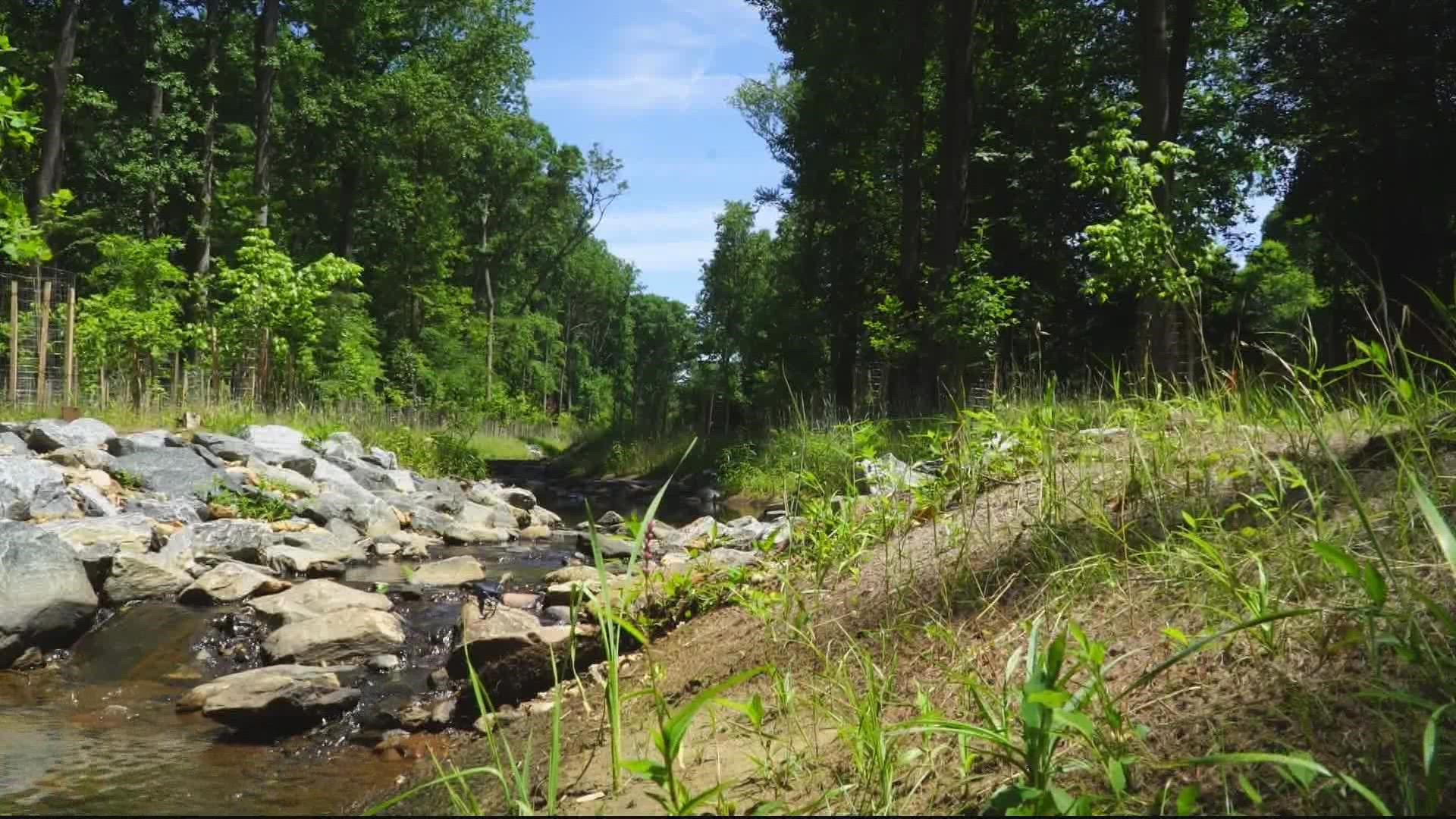GAITHERSBURG, Md. — Cities in Maryland and Virginia are taking on controversial stream restoration projects, and cutting down hundreds of trees in the process. The effort aims to reduce the amount of sediment running into the Chesapeake Bay.
The city of Gaithersburg, Maryland tore down dozens of trees last winter along a 5-acre streamside lot east of Seneca Creek State Park.
"We’ve been seeing very intense, fast rainfalls and the stream that was in this condition could cause danger to the public," said Robert Deibert, who leads Gaithersburg's stormwater projects. "There’s a lot of private property that the stream was encroaching on."
Deibert said cutting down the trees and rebuilding the stream with earthmovers was the best way to prevent sediment from ultimately ending up in the Chesapeake Bay, harming wildlife downstream.

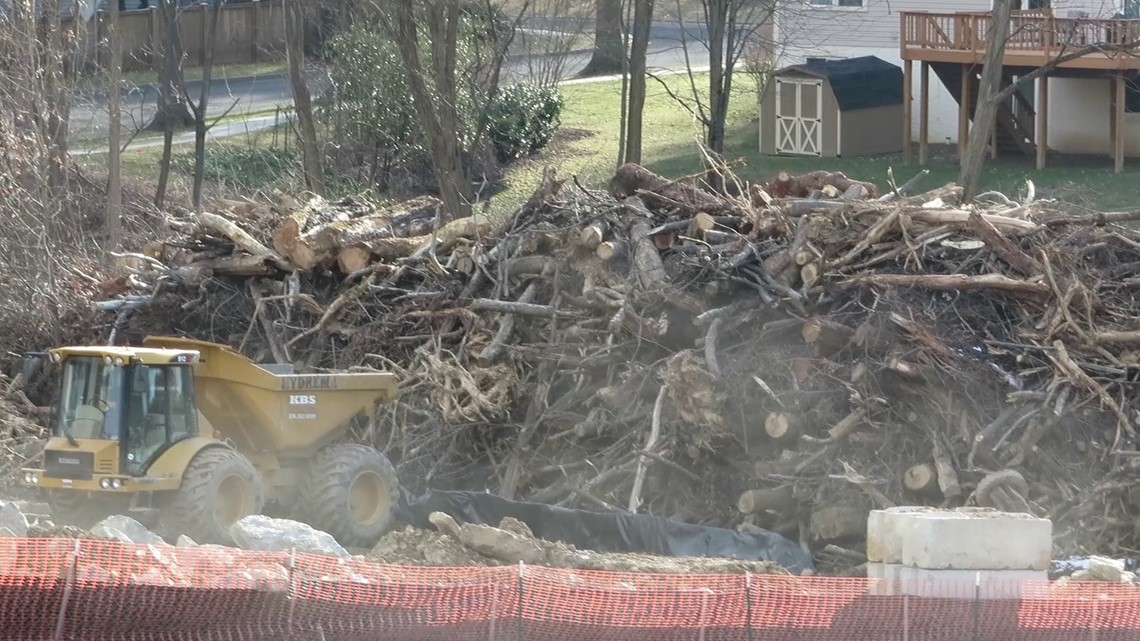
"The eroded banks were stabilized and that causes less sediment transport downstream," he said.
When asked what was lost after the project was done, Gaithersburg resident Deby Sarabia highlighted the loss of an entire ecosystem.
"We’re talking about an ecosystem," Sarabia said. "That was the big loss, this functioning ecosystem."

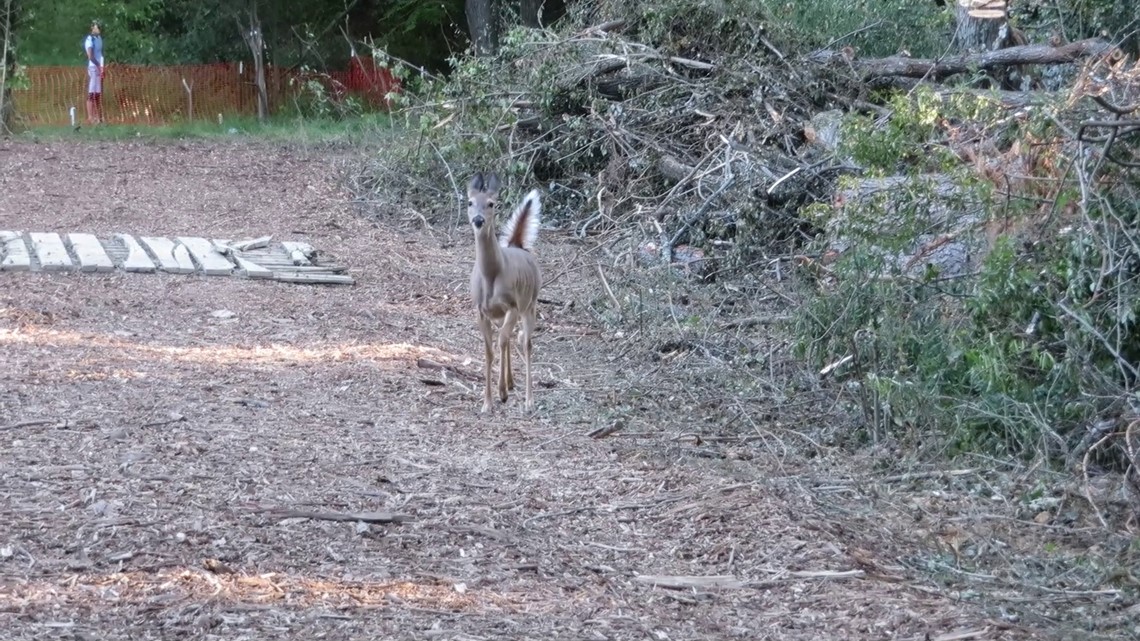
Sarabia and others tried and failed to convince the Gaithersburg City Council, which voted 3 to 2 last July in support of the $1.4 million project. It was largely paid for by federal grant money.
"It was very cool, very shady," Sarabia said. "It was really full of life."
That life spotted last year, including turtles, deer and fox, simply doesn’t come out in this now open space.
While Gaithersburg planted hundreds of trees to replace what it tore down, it will take many years to replace the old growth. WUSA9 counted the rings on some cut-down trees (how to calculate age of a tree) that reached as high as 103.

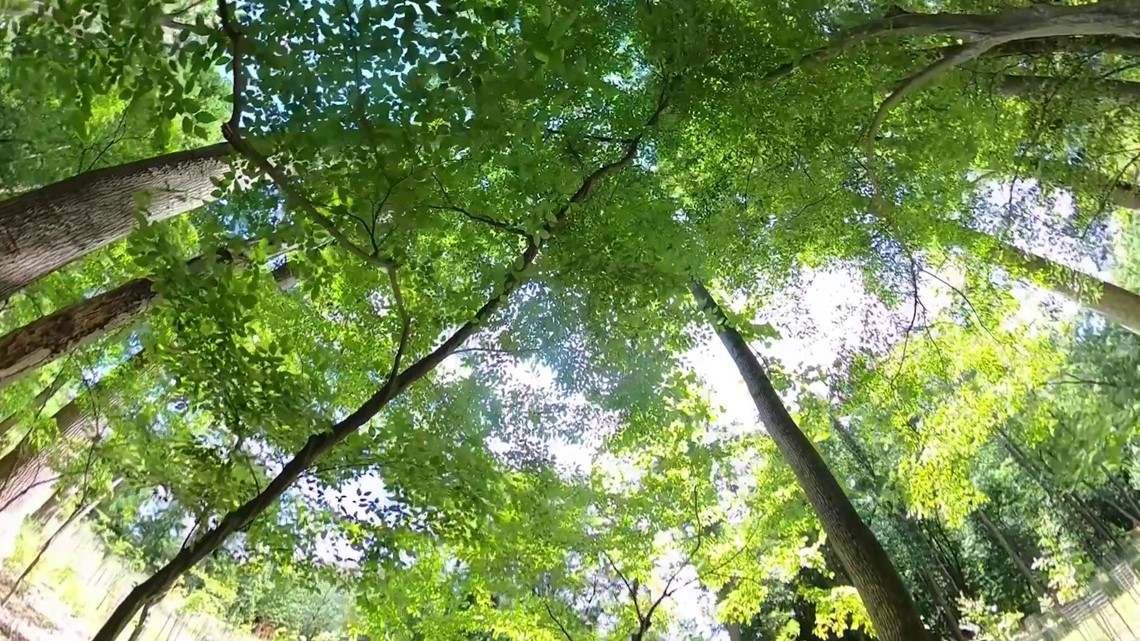
Even before the stream project, tree canopy in this section of Gaithersburg decreased. Montgomery County maps for the surrounding neighborhood show tree canopy was 49% percent in 2009 and 41% in 2018.
The impact is that ground level temps increase, as Sarabia showed with a thermometer on shaded areas. It measured 78 degrees F on the ground, while on dirt now exposed to the sun, temperatures reached 118 degrees F.

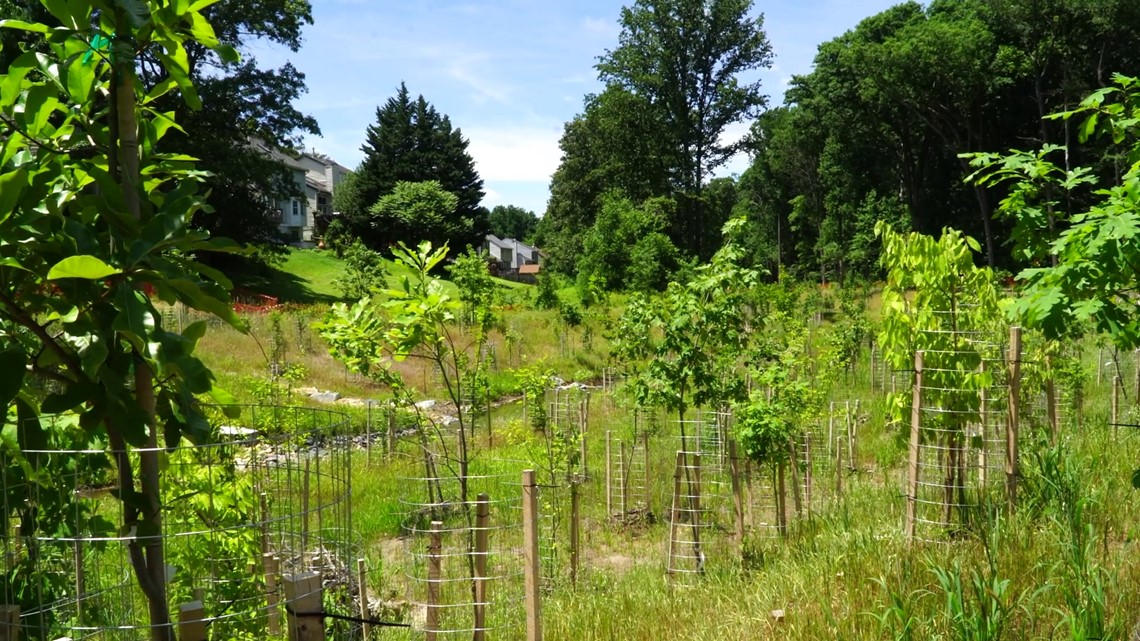
"I wouldn’t really call it impacts of less tree canopy," Deibert said. "Obviously, there is. We were focused on the tradeoff of reconnecting the flood plain with the stream."
Without the tree canopy, invasive weeds are moving in.
"We need to survey the invasive species plants every year," Deibert said. "We’ll do that next year. Once we get the survey results, we’ll take action."
But WUSA9 spotted those weeds already wrapping themselves around the replacement trees.

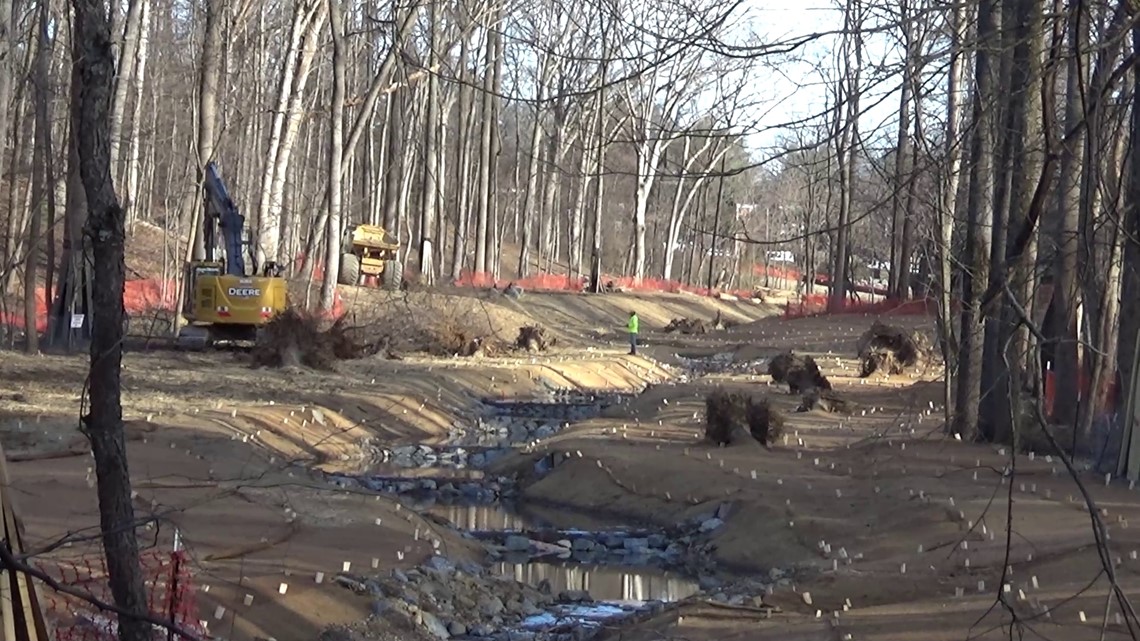
"We don’t want them cutting down the forest, the Amazon forest, but we cut down our forest," Sarabia said. "So, it’s frustrating. It makes me angry. There is a deep sense of loss."
Engineers say this was a dying forest, choked by its own growth and with streams eroding into people’s backyards. But some residents say what’s left is a decades-long scar against nature.

